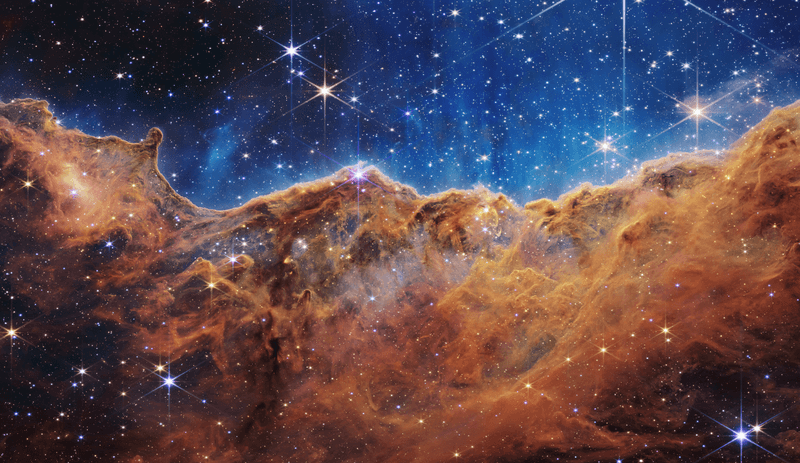Image: NASA’s Webb Reveals Cosmic Cliffs, Glittering Landscape of Star Birth

Description: The Cosmic Cliffs, the edge of a nearby, young, star-forming region NGC 3324 in the Carina Nebula. Located approximately 7,600 light-years distance, NGC 3324 was first catalogued by James Dunlop during 1826. Visible from the Southern Hemisphere, it is located at the northwest corner of the Carina Nebula (NGC 3372) of the Carina constellation. Captured in infrared light by the Near-Infrared Camera (NIRCam) on NASA’s James Webb Space Telescope, this image reveals previously obscured areas of star birth.
The region is the edge of a gigantic, gaseous cavity within NGC 3324. This area was formed from the nebula by intense ultraviolet radiation and stellar winds from extremely massive, hot, young stars located in the center of the bubble, above the area shown in this image. The high-energy radiation from these stars is disintegrating the nebula by relatively slow reaction forces.
-- Hot ionized gas and hot dust is streaming away from the nebula due to intense, ultraviolet radiation.
-- Bubbles and cavities are being blown by the intense radiation and stellar winds of newborn stars.
-- Protostellar jets and outflows, which appear in gold, shoot from dust-enshrouded, nascent stars.
This period of very early star formation is difficult to capture because, for an individual star, it lasts only about 50,000 to 100,000 years – but Webb’s extreme sensitivity and exquisite spatial resolution have chronicled this rare event.
NIRCam was built by a team at the University of Arizona and Lockheed Martin’s Advanced Technology Center.
Usage Terms: Public domain
Image usage
The following page links to this image:

